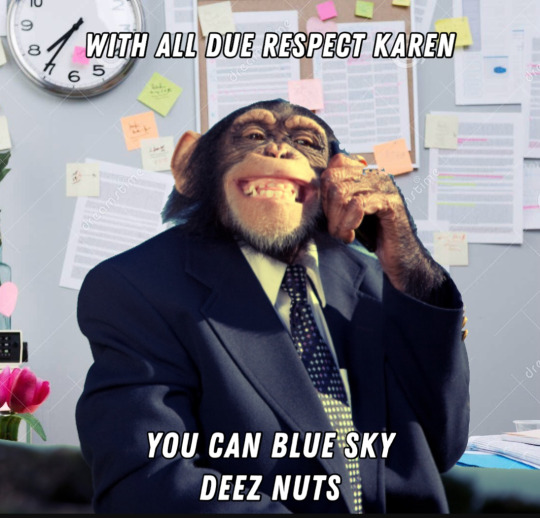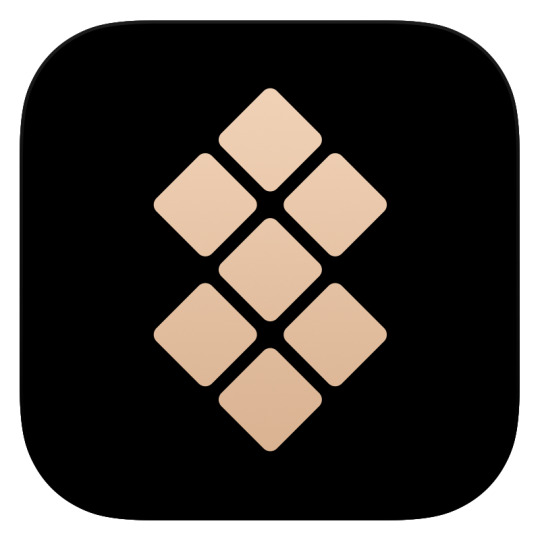#value proposition
Explore tagged Tumblr posts
Note
In lieu of the RTS 'Battle Aces' getting axed, would you talk about how to ethically but meaningfully monetize RTS games?

All monetization is, at the core, a value proposition. You offer me a thing at a given price, then I decide whether the thing is worth it to me to spend the money to get it. There are things we can do to adjust this perceived value, but there is no coercion involved - the buyer always has the option of walking away. The closer the value proposition is to the edge of what is acceptable, the "harder" the bargain feels. The more value the buyer feels she is getting relative to the cost, the better a deal feels. In my opinion, ethical monetization is where all sides of a given deal feel like what they are getting out of the deal is "worth it".

This is observable in the vast majority of complaints about game-related costs - the recent kerfuffle about Borderlands 4 possibly costing $80 to buy in, the price of specific items (e.g. EVE Online's famous $80 monocle), the price of DLC, and so on. We can tell that this is a pricing/value issue and not a principle issue because the vast majority of complaints about monetization are not about the monetization existing, but the specific prices involved. The vast majority of complaints about gaming monetization could be assuaged by lowering the price to a more acceptable level to that particular user.

We must realize that players are not monolithic. Some players must have the latest and greatest new thing like the players who preorders and buys the collector's edition or the player who immediately buys the latest DLC at launch. Some players are more value-minded and are willing to wait for a better price like the players who wait for a sale or who wait for a DLC bundle to come out. Some players are budget-oriented, allowing for only so much spending over a given time frame. Some players have their own specific favorites they are willing to spend on, like content for a particular character or a specific game mode they enjoy playing. There are also cultural factors, like how it is taboo in Western gaming culture to sell/buy power in game, or how Lunar New Year is an enormous sale times in Eastern gaming cultures. I will also point out that things aimed at one group may not be received well by other groups. In all situations, the opinions of the actual customers significantly outweigh the non-customers. This should be for an obvious reason - converting a non-paying customer to a paying customer is significantly more costly than retaining a paying customer.

Things will be "ethically" monetized when people can collectively agree on what "ethical" monetization actually is. Until that day comes, we'll probably continue the way we've been - we offer various things and we see if players are willing to spend. If enough players spend, development continues. If not enough players spend, we adjust and hope that we can make the value proposition compelling enough for enough players to spend. If not enough players spend for long enough, the game gets shut down and there's some combination of moving on to a new project or loss of jobs.
[Join us on Discord] and/or [Support us on Patreon]
Got a burning question you want answered?
Short questions: Ask a Game Dev on Twitter
Short questions: Ask a Game Dev on BlueSky
Long questions: Ask a Game Dev on Tumblr
Frequent Questions: The FAQ
14 notes
·
View notes
Text


#corporate jargon#biznes#office monkey#gibberish#circle back#return on investment#value proposition#blue sky deez nuts#office culture#late stage capitalism#anti work#the office#working 9 to 5#monkey business
18 notes
·
View notes
Text
Value Proposition Define
What does the product do?
The product helps D2 drivers promote themselves, without having to learn new technology or hunt for the next load. It provides consistency and convenience.
Why should the user care?
User struggles to find loads for their truck and are constantly on the search for the next job. The next job can come from anywhere and isn't consistent; sometimes it might take up to a week or even a month. By solving this problem, users will be relieved and concentrate on just the job. with consistent trips.

0 notes
Text

Crafting a Value Proposition to Drive CRO Success
Boost your CRO with a clear, compelling value proposition tailored to your audience.
Source: https://cro.media/insights/marketing/crafting-value-proposition-cro-success/
In the world of Conversion Rate Optimization (CRO), a solid value proposition is crucial. It serves as the cornerstone of your marketing and sales strategy, directly influencing how visitors perceive your product and whether they take the desired action on your website. A well-crafted value proposition not only communicates the unique benefits your product offers but also sets the stage for optimized conversions.
The Value Proposition and CRO Relationship
The value proposition plays a direct role in driving conversions by addressing customer pain points and offering clear, actionable solutions. It's the hook that grabs attention and pushes visitors further down the conversion funnel, making them more likely to take actions such as signing up, making a purchase, or engaging with your brand.
Target Audience Clarity
A great value proposition starts by addressing the core needs and pain points of your target audience. In CRO, identifying these elements helps to create focused landing pages that convert. By narrowing in on the specific problems your product solves, you can craft CTAs and copy that resonate with your visitors and guide them through the decision-making process.
Product Differentiation and Competitor Comparison
In CRO, differentiating your product is key to standing out in a crowded market. A value proposition should highlight what makes your solution better than others. By clearly distinguishing your product's unique benefits and features, you reduce friction during the conversion process and increase trust. This aligns perfectly with CRO strategies, which aim to minimize bounce rates and maximize engagement.
“A well-crafted value proposition grabs attention, addresses customer needs, and differentiates your product, ultimately guiding visitors through the conversion funnel.” The Value Proposition and CRO Relationship
Benefits and Features Focus
For CRO, showcasing the direct benefits of your product is paramount. A strong value proposition doesn’t just talk about what the product does but demonstrates how it solves specific problems. It answers questions like: Will this save me time? Make my life easier? Improve my business performance? These are the questions that visitors seek answers to when considering conversion.
Execution Excellence for Trust
A value proposition must not only be clear and compelling but also executable with excellence. If your product or service doesn't live up to the promise made in the value proposition, it can quickly lead to distrust and abandonment. In the CRO space, maintaining this consistency across all touchpoints is critical for ensuring that visitors follow through with conversions rather than bounce off in search of more reliable solutions.
Implementing a Strong Value Proposition for CRO
Clear, Specific, and Differentiated
Your value proposition should focus on clarity, specificity, and differentiation to stand out. These elements work together to create a seamless user experience on your site that guides visitors from curiosity to conversion. By directly addressing your customers’ core needs and offering a unique solution, you create a powerful incentive to engage and convert.
Testing and Optimizing
Just like with any CRO strategy, testing is key. A/B testing different versions of your value proposition can reveal which phrasing, offers, or solutions resonate best with your audience. Continuously refining your value proposition ensures that it remains relevant, effective, and optimized for conversions.
“Just like with any CRO strategy, testing is key.” Testing and Optimizing
Example: CRO MEDIA’s Value Proposition
CRO MEDIA’s value proposition—“Free CRM Software That Grows With Your Business”—directly speaks to small and medium businesses looking for an accessible CRM solution that scales with their growth. This clear, concise message highlights both the primary benefit (a free, scalable CRM) and a key differentiator (an easy-to-use platform). By aligning with the target audience’s needs, this value proposition not only drives engagement but also maximizes conversions by eliminating common pain points, such as complicated and expensive CRM systems. A Shopify agency can help implement this effectively.
Conclusion: Value Propositions as the Heart of CRO
Crafting a great value proposition is essential for any CRO strategy. It drives conversions by addressing visitor pain points, differentiating your brand, and delivering clear benefits. Whether you’re creating landing pages, refining CTAs, or optimizing user flow, a strong value proposition is the foundation of success. Ensure that your value proposition speaks directly to your audience's needs, differentiates you from competitors, and delivers on its promises to maximize your website's conversion potential. Learn more about our Shopify CRO audit services.
1 note
·
View note
Text
Techno Mae's Blog 105
The video "Tech101 Week 5 Lecture Value Proposition" potentially provides useful learnings. Although the details of the sermon are unknown, its title suggests that it had something to do with why a potential user would want to use a product or service.
You likely start with what a strong value proposition even is. You are focusing on the fact that a value proposition is more than a list of features; that it is a simple statement of how your product uniquely solves a problem for a target audience.
For examples, the frameworks for building a value proposition. It could explore, for example, the "Value Proposition Canvas," a model that compares what a product has to offer (researched benefits) to what a customer needs and what pains him or her.
Additionally, the lecture may also speak on how the value proposition can be adapted to diverse groups. What works for a geeky early adopter may not translate for a more mainstream user. The speaker would probably emphasise the importance of dividing your full audience into different groups and articulating unique value propositions for each of those groups.
The "Tech101 Week 5 Lecture Value Proposition," regarding just how crucial it is to express a concise and meaningful value proposition that, quite literally, moves product. Developers can learn what product would suit this perfect customer so they know they'll get the right product to the right person at the right time.
0 notes
Text
TECH 101: Value Proposition
The video lecture by TECH 101: Value Preposition, it talks about the importance of developing a strong value proposition for a business idea. It focused on how to engage with users, understand their needs and design a product or service that directly addresses the needs of the users. I learned that a value proposition is offering real solutions to real problems existing in our society. By conducting interviews and gather feedback, we can better tailor our products to ensure they truly resonate with the target audience.
There is one segment of the lecture which impressed me a lot, i.e., talking about "jobs to be done." The principle focuses on the fact that the customers are not seeking products alone; they desire solutions for the issues at hand. It's very important to realize what solution or gain is the customer waiting for and in what manner will the product make their life better or easier. This concept assists in shifting the direction from concentrating on the product features and moving more towards the focus on the experience and satisfaction of the user.
The discussion also included validation of the value proposition from user testing and feedback. I understand that it is not sufficient to believe your idea will succeed. Validation through of prototypes and ongoing feedback is necessary to iterate and develop the product so that it's up to par with user expectations.
Overall, this lecture reaffirmed that the key to success for a business lies in knowing what the customer needs and being willing to change constantly based on feedback. It taught me that developing a value proposition is a listening, understanding, and testing process, which are all essential steps in creating a successful product or service.
0 notes
Text
Value Proposition: A Customer Discovery Process
In today’s competitive market, businesses must clearly communicate the unique value they offer to customers. This is where a value proposition comes in—a compelling statement that explains why a customer should choose a particular product or service over competitors. A strong value proposition is rooted in understanding customer needs, differentiating from competitors, and ensuring that the product delivers real benefits.
A Real-World Scenario
Imagine a startup launching a budget-friendly fitness app. While there are many fitness apps available, this one targets students and young professionals who want effective workouts without expensive gym memberships. Through customer discovery—surveys, interviews, and user feedback—the company learns that its target audience values affordability, guided workouts, and community support. Based on this, the company crafts its value proposition: "Affordable, expert-designed workouts anytime, anywhere—no gym required."
How It Differentiates?
A value proposition sets a business apart from competitors. The fitness app example differentiates itself through affordability and accessibility, which appeals to budget-conscious individuals. Companies like Apple, Tesla, and Airbnb also use clear value propositions to stand out.
1. Apple’s iPhone: “The experience is the product.” Apple differentiates itself through seamless integration, user-friendly design, and premium branding.
2.Tesla: “Sustainable energy meets high performance.” Tesla focuses on innovation, eco-consciousness, and high-performance electric vehicles.
3.Airbnb: “Belong anywhere.” Airbnb’s value proposition emphasizes personalized travel experiences and local hospitality, setting it apart from traditional hotels.
Broad Value Categories
A strong value proposition often falls into one or more of the following categories:
1. Performance – Companies like Tesla and Apple deliver cutting-edge technology and superior functionality to customers.
2. Risk Reduction – Businesses like PayPal reduce risk by offering buyer protection, ensuring safer online transactions.
3. Accessibility – Platforms like Netflix and Spotify make premium content easily accessible at an affordable price.
4. Customization – Brands like Nike (Nike By You) allow customers to personalize their products to suit individual preferences.
Value Proposition Canvas
To refine their value proposition, businesses use the Value Proposition Canvas, a framework that maps customer needs, pain points, and expectations against a product’s benefits, solutions, and unique offerings. This tool helps companies tailor their messaging and ensure they are addressing real customer demands effectively.
A well-crafted value proposition is more than just a slogan—it is the foundation of a business’s success. By understanding customers, differentiating from competitors, and aligning with key value categories, companies can create compelling offers that drive engagement, loyalty, and long-term growth.
0 notes
Text
Pursuing Available Category Entry Points
To effectively pursue category entry points, businesses must embrace Credibility, Competitiveness, and Commonality as foundational pillars. Organizations can remain agile and informed in a fast-changing market landscape by leveraging Adaptive Planning, Action Research, and Fractional Marketing Services. Building trust through credibility and shared values fosters stronger connections with audiences, while competitive differentiation ensures you stay ahead of rivals.
Together, these strategies empower businesses to make smarter decisions and seize opportunities with precision. By aligning these elements, you can create a sustainable framework for growth that meets current demands and anticipates future challenges with confidence. https://business901.com/blog1/pursuing-available-category-entry-points/

#customer expectations#Customer Experience#customer feedback#Customer Value#Delivering Value Propositions#Fractional CMO#Fractional Marketing Director#Managing Customer Value#Market-Value Pricing#Sales Inquiry#Value Branding#Value ladder#Value Laddering#Value Model#Value modeling#Value proposition#Value-Based Pricing
0 notes
Text
youtube
**Title: Insights from the Intersection of Marketing and Design: A Conversation with Andréa Mallard of Pinterest** In the ever-evolving landscape of marketing and communications, there are few voices as distinguished as that of Andréa Mallard, Chief Marketing and Communications Officer at Pinterest. In a recent episode with Seth Matlins, managing director of the Forbes CMO Network, Andréa shared her insights into the intricate relationship between marketing strategy, product design, and user experience. One of the standout themes from the discussion was the unique breadth of Andréa's accountability at Pinterest. She deftly oversees multiple teams that are responsible not only for marketing and communications but also for product design and user experience. This broad portfolio allows her to approach challenges holistically, an increasingly essential strategy in today's multifaceted market. Andréa emphasized an idea that resonates deeply with marketers across the board: the necessity of earning the right to grow. She argued that effective marketing begins with building a genuine connection with consumers rather than relying solely on bottom-of-the-funnel strategies, which tend to focus narrowly on conversions and sales. “No CEO has ever loved a brand because of its bottom-line strategy,” she remarked, suggesting that sustainable growth stems from understanding and nurturing relationships with customers—an idea that reinforces the power of storytelling in branding. This philosophy is particularly relevant in a world where consumer expectations are continually rising. In Andréa’s view, successful brands must engage their audiences authentically, ensuring that every marketing touchpoint reflects the brand’s values and resonates with its target demographics. By fostering emotional connections and addressing the needs and desires of consumers, brands have the potential to cultivate loyalty and advocacy that drive long-term success. As she navigates the responsibilities that come with her role, Andréa's approach serves as a powerful reminder for businesses aiming to carve out their niches in competitive markets. Her advocacy for innovation in both marketing and design indicates a bright future for brands willing to embrace change and put the user experience at the forefront of their strategies. In closing, the conversation with Andréa Mallard provides invaluable insights that underscore the importance of integrated marketing efforts and the transformative potential of user-centric strategies. For those looking to deepen their understanding of this dynamic landscape, it’s a conversation that cannot be missed. For more enriching discussions and expert insights from leaders like Andréa, subscribe to Forbes and fuel your journey toward professional success.
#marketing strategy#brand perception#creative leadership#consumer psychology#value proposition#Youtube
0 notes
Text
How to Develop a Unique Value Proposition
As the economic competition goes to a more intense level, you must differentiate yourself by having clear answers to what your visitors are looking for. That is why it is important to formulate a strong value proposition that would state what a customer should choose your product or service for. Below is a step-by-step process on how to achieve your value proposition as well as a practical guide and tips on how to achieve a compelling value proposition.
0 notes
Text
Quick Thought: SetApp Economics

What is SetApp?
SetApp is an application rental service that allows you to pay a fixed monthly or annual fee to use any applications on their service as long as you continue to pay.
Pricing
They have 3 different plans all of which can be paid on an annual basis saving you 10%.
Mac - $9.99/month ($107.88/year)
Mac + iOS - $12.49/month ($134.88/year)
Power User - $14.99/month ($161.88/year)
I am not going to go into the details here, but it suffices to say that the base subscription is just one Mac. The middle option is 1 Mac and 4 iOS devices. The top end is 4 Macs and 4 iOS devices.
I will point out that they omit the yearly total, and that's why I have included it so you can see just how much you are paying.
For the discussion here we will limit it to the Mac, but the same rules will apply on iOS.
The Apps
According to SetApp they more than 250 applications on their service. The applications are installed in the SetApp Applications folder in your Applications folder. If you look inside the app bundle you will see that they have been changed to make them work only while you pay. That is a story for another day. The apps available cover a wide range of tasks and functions– but don't get your hopes up you won't find things like Microsoft Office or Adobe Photoshop
The applications come from all over some are only on SetApp or the developers website and some are also on the Mac AppStore.
Economics
When deciding if SetApp is right for you consider the following:
Application Cost
Paid Upgrade Frequency
Total Subscription Cost - SetApp
A good potential use case are subscription applications like Ulysses which costs $39.99/year or $5.99/month. By itself this is not a good deal but if you pair this with a couple other subscription programs you may find that you are paying less per month than you would have.
On the other side applications that are not subscription applications become more complicate to analyze. Take Bartender (the menu bar organizer) this application costs $20 for five licenses. However, it does have paid upgrades–these upgrades seem to be on 3+ year cadence. If you were to just use an application like this with SetApp you are being ripped off. Consider the numbers:
Assuming Bartender releases a paid update every 3 years which is about the time between version 4 and 5 and the update costs is $12 and you spent $20 for the original five licenses. Also assume that you use it on one Mac. SetApp will cost you at best for one Mac $107.88/year. For those three years you would pay $323.64 for a something that would have cost you $32 over that three year time span–10% of the cost on SetApp.
The above is to demonstrate that you need to not just say: "oh, only $9.99/month for all these apps–how cheap!" Really look at what you are going to use–do your research and see where the best deal is.
What you will likely find is that SetApp is only a good deal for you if you either use a lot of the catalog, or use a bunch of paid subscription applications where the total per month cost is greater than the SetApp subscription fee.
Conclusion
SetApp is an interesting value proposition. I loathe renting my software like this. The only "rental" I am okay with is if it's for updates, but the software works without the subscription.
Leaving that aside if you use a sufficient amount of the software and you are careful SetApp can be a good value–even a savings. Just beware of only using some of the smaller cheap utilities. You may find that within a year you have spent more than all of those applications would have cost you to buy them outright.
Rental software is a scourge and curse–if you are going to help it thrive by subscribing do yourself a favor–make sure you are getting a good deal!
0 notes
Note
Triggered by the current steam sale: how do devs feel about years of their hard work being sold for 50, 70, 90% off? Is there some bitterness about it, or just 'eh, part of the industry'
I don't think the emotion we feel is bitterness so much as it is a bit of sadness. Prices falling is normal and unavoidable. It is unlikely the games I worked on early in my career could be sold for anything today. I have mixed feelings about Steam sales in general.

I think there is a valid and growing concern among game developers that Steam sales are devaluing games as a whole. Instead of finding a great game at a bargain and appreciating it when playing it, Steam Sales have become this seasonal event where players buy a large number of games that they rarely play. The games we buy are just text lines in the library. There's even a pile-of-shame tracker that tells people how many unplayed games they have in their Steam libraries.

What I care about as a game dev is that players enjoy playing the games I worked on. I feel sad when I think about players who may boot the game up for a few minutes, give up, and throw the game away, never getting to see the work I put into it. I feel sad when I think about the amazing games I got to play that were so formative for my career, and how many players today would ignore them since they're old and cheap. I think that's the real tragedy of Steam sales and the like - if it doesn't cost you anything for a game, there's very little reason to invest yourself into it. We ultimately build games for players to enjoy. Steam sales perversely make it both easier for players to see my work and harder for them to actually enjoy it.
[Join us on Discord] and/or [Support us on Patreon]
Got a burning question you want answered?
Short questions: Ask a Game Dev on Twitter
Long questions: Ask a Game Dev on Tumblr
Frequent Questions: The FAQ
55 notes
·
View notes
Text
How to Plan a Customer-driven Product Strategy?
Customer satisfaction is a critical driver for product’s success. Learn the impact of a customer-driven development and how to build a proactive strategy
#Customer-driven strategy#Product development#Market research#User feedback#Customer needs#Product roadmap#Customer-centric#Strategic planning#Innovation#User experience (UX)#Business goals#Customer journey#Value proposition
0 notes
Text
The Business Plan Gap
Struggling with business planning? You're not alone. In this article, I share key insights to help you overcome common challenges and create a robust plan for success. Whether you're starting up or scaling, these strategies can make a difference.
In today’s dynamic business environment, one factor consistently stands out as a differentiator between companies that thrive and those that struggle: strategic planning. The presence (or absence) of a well-crafted business plan can significantly impact a company’s ability to navigate challenges and capitalize on opportunities. This realization led me to explore effective business planning in…
#business challenges#business development#business growth#business planning#business strategy#business success#Competitive Advantage#Entrepreneurship#financial forecasting#Market Analysis#small business tips#startup advice#strategic planning#strategic thinking#value proposition
0 notes
Text
Precisely Right>Almost Right
1 note
·
View note
